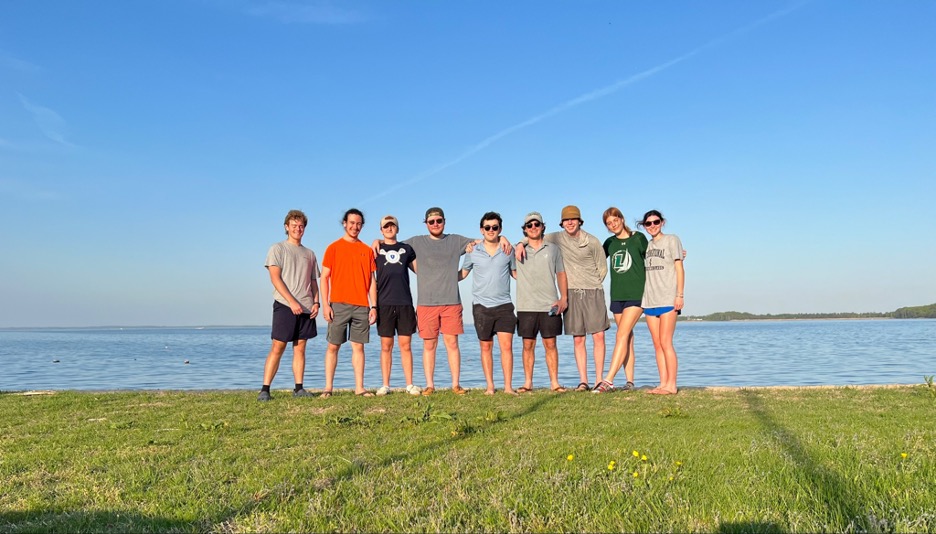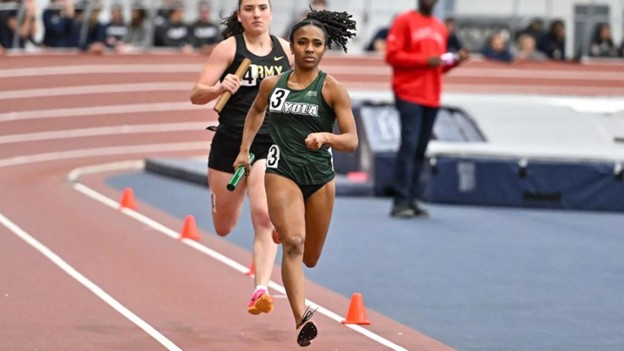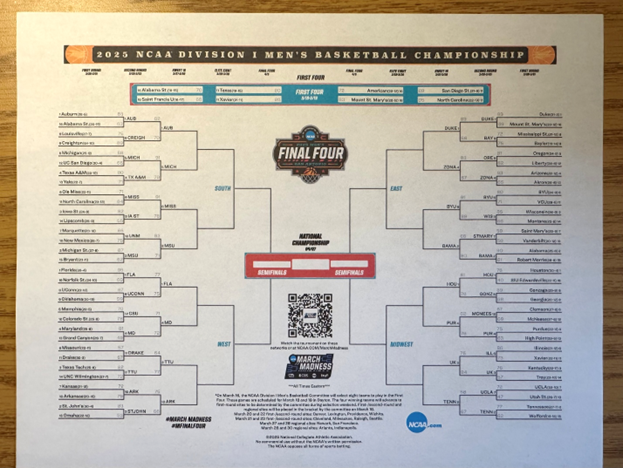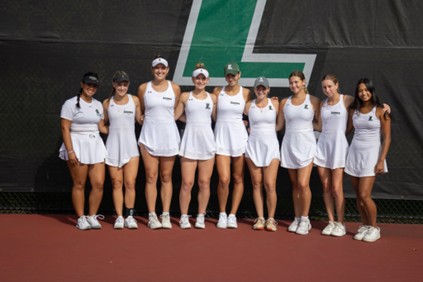“Let’s pull people off the water, I don’t know if it’s safe to race.”
This was a thought like one the collegiate sailing race committee had two years ago. Boats were all ready to take off for the McCurdy Memorial Regatta in Delaware. The teams were currently amid Hurricane Ian with strong winds and heavy rain. Boats capsized left and right as a total of ten boats flipped that day, but not Loyola’s boat. Inside the boat and weathering the storm was current Loyola Club Sailing Captain Hope Geise ‘24 along with teammate Luke Plecinoga ‘25. Despite the harsh conditions, the two held on tightly with a grit and determination to finish the race successfully and they did just that. Loyola placed within the top five that day. Geise recounted the moments after they returned to shore.
She said, “We came off the water and we were drenched in rain, and it was cold, and it was pretty miserable. We were up to our knees in water. We had so much water in the boat, but it was still fun.”
This happened to be her biggest success story yet. She explained that the team of two always had mediocre finishes up until this race. The team altogether rarely practiced in stormy conditions to begin with, but the challenge proved surmountable, and it was all without a coach.
According to former club captain Caroline Fortier ’23, the club team was first established in 2009. Despite the team’s longevity, it is success stories like Geise’s that go unheard of. The club is not well recognized on campus, but the captains have tried to make the team’s presence more known. They have done so through Loyola’s annual club fair and through their Instagram page. Without a coach, the responsibility of recruiting members has been placed solely on the captains’ shoulders. For Geise as well as her co-captains Will Crabtree ’25 and Jackson Martin ’25, this has been a challenge since the start of COVID-19.
Prior to the pandemic, the team held their practices in the Inner Harbor, but this has recently changed. Currently, the team is hosted by the Baltimore County Sailing Center on the Chesapeake Bay in Essex, Maryland. Martin hopes that by next year, the team will be able to return to the Inner Harbor. This location would make for a shorter commute to practices. He explained how the team has changed through the years.
He said, “In stories from my freshman year and sophomore year from some seniors on the team, they talked about how big the program was before COVID-19. Last year, we were a six-man and woman team, and it was a lot smaller. I heard stories of them racing the J/22’s and cruising around the Inner Harbor on twelve-man boats. It was numbers and precedents that we never got to see.”
Both Geise and Crabtree grew up on the water but for Martin, it was a different story. Before coming to Loyola, Martin had only sailed for two weeks at a summer camp when he was young. He first discovered Loyola’s team through the club fair in his freshman year and decided to give it a try. Martin reflected on where he was then and how far he has come to being a captain of the sailing team. He gave up his story as proof that anyone can learn to sail, and the team will welcome you with open arms no matter where your skill level lies. If you apply yourself, Martin stated, you can reap the benefits in as little as a week after first learning from teammates.
At the regatta for the Luce Trophy, Loyola was the only team sailing without a coach. The team has qualified for the Luce Trophy three years in a row in which Martin expressed his pride.
“Qualifying for the Luce three years in a row is a pretty good achievement that I’m definitely proud of. Especially with a team of about half who have never been to a regatta before, we’re kind of able to figure it all out without a coach and with as much input as I can give.”
Loyola competes against other collegiate teams as part of the Middle Atlantic Intercollegiate Sailing Association (MAISA). A few of these fellow club teams include the University of Delaware, the University of Virginia and American University. Loyola’s skill level in sailing is equal to that of Monmouth University, University of Delaware and Rutgers University in particular. Martin explains that they have made friends with sailors of other teams like these, and it is fun to compete against them. However, the stakes are a bit higher when they are racing tougher competition like Princeton University.
Loyola races varsity teams as well, not just other club teams. Examples of these varsity teams include St. Mary’s College of Maryland, Washington College and Christopher Newport University. Martin stated that they even compete with teams that have Italian National sailors at the Olympic level.
Martin said, “Seeing how they operate and then looking in the mirror and saying, ‘We don’t even have a coach, we’ve taught ourselves this much and look, we’re still in the same boats, we’re still out on the same course racing the same races they are”, has been a really unique experience racing as a club team.”
Geise echoed Martin’s point and marveled at the difference between Loyola and the competition.
She said, “It’s interesting to be able to race people who are recruited for their sport, and they are Division I athletes and they get scholarships and then it’s like a group of kids from Loyola that either know how to sail or taught each other how to sail.”
Everything the team accomplished is from their own efforts, and Geise is proud of this. However, she also believes they could benefit from having a coach. She thinks that if they could receive extra input from a coach during practice time, their team could reach the next level. For now, the team stands by each other one race at a time.
You can keep up with the team by following their Instagram.










































































































